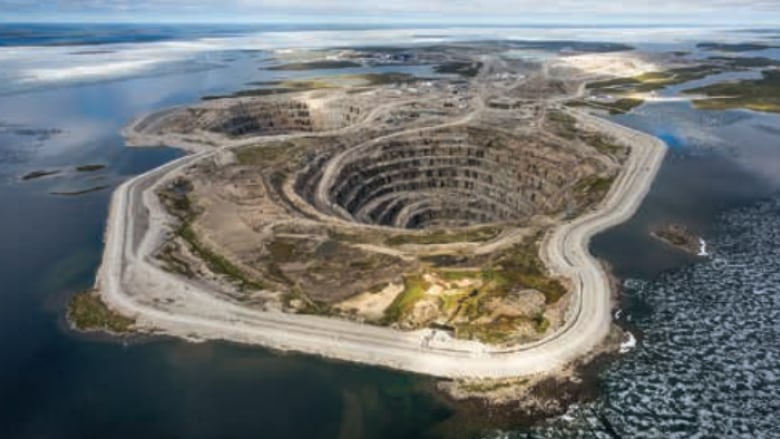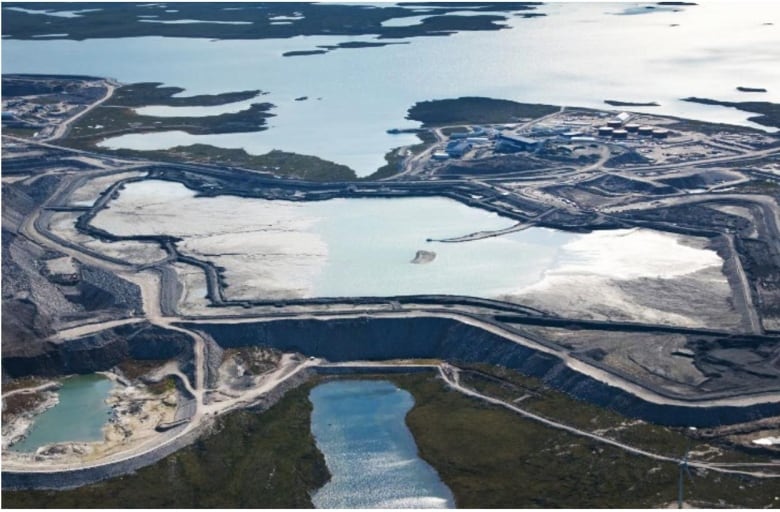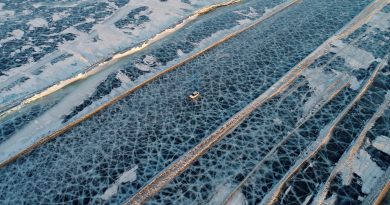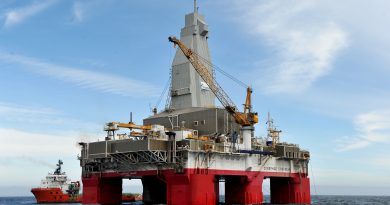Diamond mine in Canada’s Northwest Territories wants to dump waste into its pits

The Diavik Diamond Mine, in the Northwest Territories, wants to radically change the way it deals with mine waste at Lac de Gras.
The company filed for an amendment to its water licence with the Wek’eezhii Land and Water Board last year that would allow it to fill three mined-out pits with processed kimberlite — diamond-bearing rock — which includes waste rock and tailings known as slimes.
Right now, processed kimberlite is piled into a containment facility in the middle of the island where the mine operates, about 300 kilometres northeast of Yellowknife.
Diavik says that storage area is running out of room and won’t last until the mine is set to close in 2025.
The Mackenzie Valley Environmental Impact Review Board will conduct an environmental assessment of the proposed plan, saying more information is needed on how adding mine waste to the pits could affect fish, wildlife (including caribou) and traditional use by Indigenous Tlicho and Akaitcho Dene.

New plan, new review
A major concern is that the mine was approved for development in 1999 based on a detailed closure plan that includes flooding the pits with freshwater, then breaching the dikes that surround them so they reconnect to Lac de Gras.
“The permission they got from the Canadian Environmental Assessment Act in 1999, the comprehensive study that was done under that act, was to connect the pits to the lake after the mine is closed, but those pits were never planned to have mine waste — specifically processed kimberlite — inside them,” Alan Ehrlich, the review board’s manager of environmental impact assessment, said in an interview.
“It’s different from what was originally planned — it’s permanent and irreversible, and restoring those pits to fish habitat was part of the original project approval,” Ehrlich said. “You have to get the new thing considered as carefully as the first thing.”
According to review board documents, at a meeting last month between the Mackenzie Valley Environmental Review Board, First Nations representatives, the federal and territorial governments and Diavik to determine the scope of the environmental assessment, concern was raised that the processed kimberlite could contaminate water in Lac de Gras when the dikes are breached.
Diavik responded that it would need to prove this mixing of water won’t happen, and that anything that mixes won’t be in a quantity that will be harmful.
The Lutsel K’e Dene First Nation, along with other groups who commented on the proposal, say much more information is needed to prove the scientific modelling is sound.
“Their proposal is that they will deposit all of the processed kimberlite into the underground and they will fill it up with water — they say it will never mix, or flip,” said Stephanie Poole, interim measures agreement co-ordinator for the Lutsel K’e Dene, in an interview.
“Then for five years after active closure, they’re going to monitor that water inside the dike and after five years if they determine that water is safe, they’ll breach the dike and it’ll become a greater part of Lac de Gras.”

Climate change complication
Poole says if the water quality is not safe, the dikes will have to stay up forever, something that will be challenging, and costly, given climate change.
“Your dike has to stay frozen,” she said. “A lot of what they’re proposing relies on permafrost being there, and with climate change the permafrost isn’t going to be there anymore. You’ll have to keep windmills there, generating this freezing forever.”
In review board documents, Diavik says putting processed kimberlite in pits will reduce environmental risks, including removing the slimes — a fine, wet kimberlite dust that can act like quicksand and pose a hazard to caribou and humans — from the current storage facility.
Diavik says the plan will also cut capital costs and reduce risks associated with closing the mine.
Alternative options for storing the processed kimberlite include raising the dam walls of the existing processed kimberlite containment facility and building additional on‐land containment sites.
The Mackenzie Valley Environmental Review Board met Tuesday to finalize the scope of the environmental assessment, which will include public input and could last several months.
Poole says Crown-Indigenous Relations and Northern Affairs Canada is providing $300,000 to individuals and groups to help them to participate in the environmental assessment.
The Diavik Diamond mine is a joint venture. The Rio Tinto Group owns 60 per cent of the mine. Dominion Diamond Corporation, owned by the Washington Companies, holds the other 40 per cent. The mine is operated by Yellowknife-based Diavik Diamond Mines Inc., a subsidiary of the Rio Tinto Group.
The company did not return a request for an interview by deadline.
Related stories from around the North:
Canada: Contaminated sites in northwestern Canada now mapped online, CBC News
Finland: Stricter mining regulations and oversight needed in the Arctic, Finnish report says, Yle News
Norway: Minister downplays environmental impact of planned mine in Arctic Norway, The Independent Barents Observer
Russia: Russian miners dig deeper into vast Kola nickel reserve, The Independent Barents Observer
Sweden: Iron mine in northern Sweden to restart production, The Independent Barents Observer
United States: Mining company boosts spending to lobby U.S. government for contested Alaska project, Alaska Public Media



